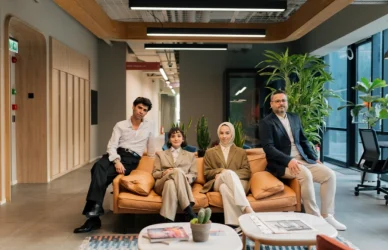Do you know understanding and honoring the rich heritage of Aboriginal cultures is more important? However, achieving Aboriginal cultural safety is difficult, it requires fostering environments where Aboriginal individuals feel respected, valued, and understood. In this blog, we will walk you through practical steps and strategies for building these respectful spaces.
What is Aboriginal Cultural Safety?
Aboriginal cultural safety is a concept that focuses on creating a respectful and supportive environment for Aboriginal and Torres Strait Islander peoples within healthcare, social services, workplaces, and educational institutions.
It involves understanding and recognizing Aboriginal and Torres Strait Islander cultures, histories, and perspectives to address the power imbalances and systemic biases often present in mainstream institutions.
Why Aboriginal Cultural Safety Matters in Today’s Society
Aboriginal cultural safety is essential in today’s society, as it acknowledges and respects the unique cultural identities, histories, and perspectives of Aboriginal peoples. Key reasons why it matters include:
- Addresses Historical Injustices: Recognizes the impacts of colonization and seeks to create environments where Aboriginal people feel valued and free from discrimination.
- Promotes Equity: Helps reduce disparities in health, education, and socioeconomic conditions by ensuring services are responsive to Aboriginal needs and cultural contexts.
- Improves Key Services: Essential in areas like healthcare, education, and law enforcement, where a lack of cultural safety can lead to mistrust and poor outcomes.
- Encourages Inclusivity and Respect: Fosters mutual respect and understanding, breaking down stereotypes and building more inclusive communities.
- Supports Reconciliation Efforts: By prioritizing cultural safety, organizations take meaningful steps towards reconciliation and honoring Aboriginal rights and identities.
Aboriginal cultural safety ultimately promotes a fairer society where all individuals feel safe, respected, and valued.
Strategies for Building Aboriginal Cultural Safety
Creating an environment of cultural safety for Aboriginal communities involves thoughtful actions and awareness. Cultural safety not only supports inclusivity but also ensures that Aboriginal individuals feel respected and valued in every interaction.
For businesses, organizations, and individuals working closely with Aboriginal communities, it’s essential to adopt strategies that foster understanding and build trust. Here are three key approaches to building Aboriginal cultural safety.
Self-Reflection and Continuous Learning
Building cultural safety begins with personal self-reflection. Individuals should take the time to examine their own beliefs, biases, and assumptions about Aboriginal cultures. Recognizing any unconscious biases allows individuals to approach interactions with more openness and respect.
Continuous learning is also essential, actively seeking out resources, attending workshops, or engaging with Aboriginal cultural training programs can deepen one’s understanding and awareness.
Effective Communication with Aboriginal Communities
Effective communication is vital to cultural safety. When interacting with Aboriginal individuals, listening actively and respectfully is key. It’s important to avoid making assumptions or generalizations about their experiences or viewpoints. Use clear, open-ended questions, and allow space for Aboriginal individuals to share their perspectives.
Additionally, non-verbal cues play a significant role, showing respect through body language, such as maintaining eye contact and nodding attentively, can help build rapport. Remember, communication isn’t just about speaking; it’s about truly listening and responding with empathy and understanding.
Building Trust and Relationships
Trust is the foundation of any meaningful relationship, and building it with Aboriginal communities requires patience and consistency. This means showing up, being dependable, and demonstrating genuine respect for their values and traditions. Engage in community events or participate in cultural activities when invited, as these experiences foster mutual understanding and respect.
Furthermore, acknowledging the historical context and experiences of Aboriginal communities and taking steps to address past injustices can help lay the groundwork for stronger relationships.
In building trust, actions speak louder than words demonstrating a long-term commitment to inclusivity and cultural safety will ultimately lead to lasting, positive relationships with Aboriginal communities.
Aboriginal Cultural Safety in Different Settings
Ensuring Aboriginal cultural safety across various settings is crucial for promoting inclusivity, respect, and understanding. Whether in healthcare, education, the workplace, or public services, fostering an environment where Aboriginal individuals feel safe and valued is essential.
Healthcare
In healthcare, cultural safety involves understanding and respecting Aboriginal patients’ beliefs, values, and practices. Healthcare providers should engage in culturally sensitive communication, avoiding assumptions and listening carefully to patients’ perspectives.
Providing access to traditional healing practices and involving Aboriginal healthcare workers can further enhance cultural safety, ensuring that Aboriginal patients feel respected and understood during their treatment
Education
Educational institutions play a vital role in promoting cultural safety for Aboriginal students. Teachers and staff should actively learn about Aboriginal cultures and incorporate these perspectives into the curriculum. Establishing programs that celebrate Aboriginal heritage and involving community members in school activities can foster a sense of belonging.
Additionally, providing support services tailored to the needs of Aboriginal students helps ensure they have a positive and inclusive learning experience.
Workplace
Creating a culturally safe workplace requires recognizing and valuing Aboriginal employees’ contributions. Organizations should provide diversity and cultural awareness training to all staff members, highlighting the importance of respecting cultural differences.
By implementing policies that support Aboriginal employees, such as flextime for cultural practices, workplaces can build an environment where everyone feels valued and included.
Public and Social Services
In public and social services, ensuring cultural safety means delivering services that meet the needs and values of Aboriginal communities. This may involve employing Aboriginal staff and providing culturally appropriate training for all personnel.
Promoting open communication, honoring traditional practices, and customizing services to the community enables public service providers to establish trust and enhance the support available to Aboriginal individuals and families.
Conclusion
In a nutshell, establishing Aboriginal cultural safety is crucial for creating inclusive and respectful environments in healthcare, education, workplaces, and public services. Self-reflection, effective communication, and trust-building contribute to the development of spaces where Aboriginal peoples feel valued and understood. Moreover, a strong commitment to cultural safety promotes equity and reconciliation, enriching the broader community by embracing diverse perspectives and experiences.
At SmartOSC Careers, we understand the significance of cultural safety and inclusivity in our workplace. We provide a variety of IT jobs in Vietnam opportunities that prioritize diversity and invite applicants from all backgrounds to join our website, fostering a more inclusive future together.






